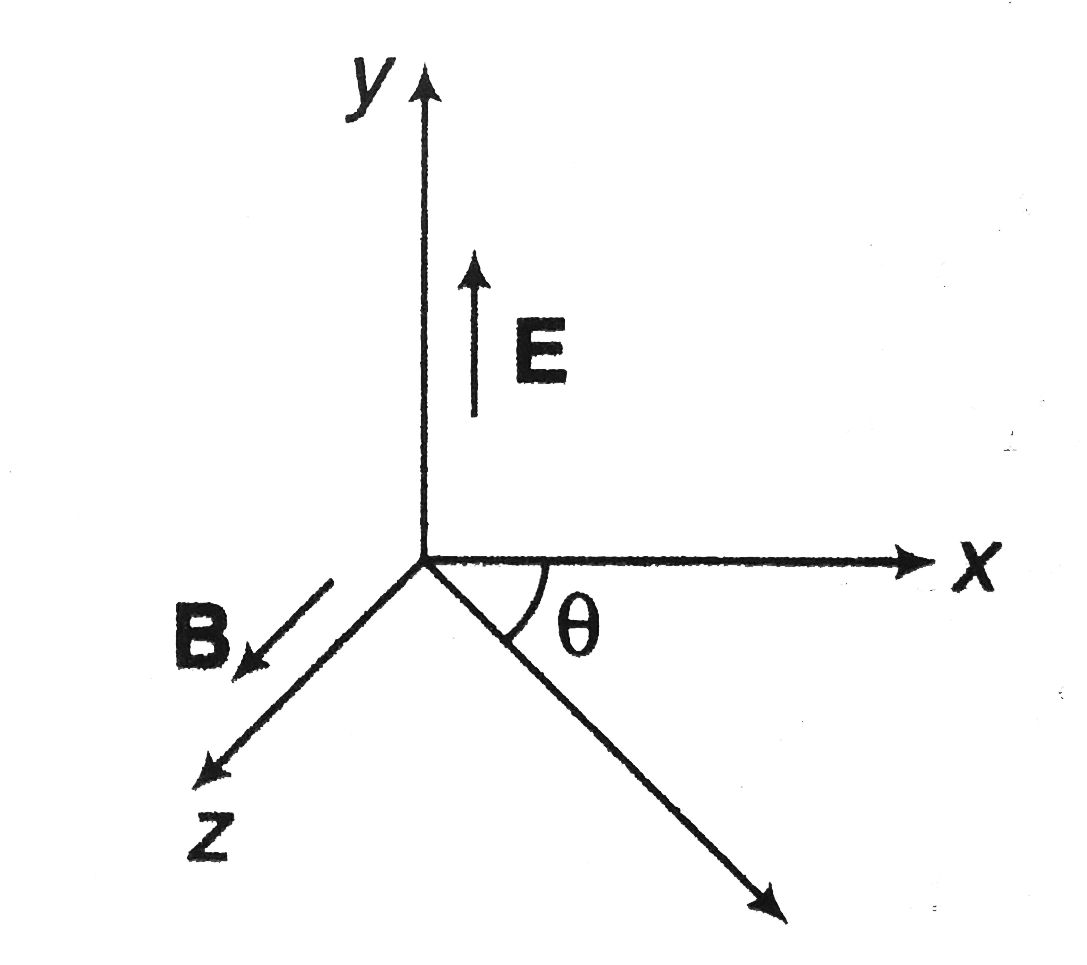A non-relativistic proton beam passes without deviation through a region of space where there are uniform transverse mutually perpendicular electric and magnetic fields with E=120kVm−1andB=50mT. Then the beam strikes a grounded target. Find the force which the beam acts on the target if the beam current is equal to i=0.8mA.
Mass of protons =1.67×10−27kg.
80μN
25μN
20μN
35μN
The correct Answer is:c
Since, proton moves with constant velocity . So, magnetic force on the proton is balanced by electric force.
∴qE=qvB or E=vB
The force on the target is F=ΔpΔt=mnvΔt
Where, n=number of protons before striking the target
l=neΔt⇒nΔt=le
∴F=mvle=mle[EB]
F=1.6×10−27×120×1000×0.8×10−350×10−3×1.6×10−19
=20×10−6N=20μN
Topper's Solved these Questions
Similar Questions
A non-relativistic protons beam passes without diviation through the region of space where there are unifrom transverse mutually perpendicular electric and magnetic fields with E=120kV/m and B=50mT. Then the beam strikes a grounded target. Find the force with which the beam acts on the target if the beam current is equal to I=0.80mA.
View SolutionA proton beam passes without deviation through a region of space where there are uniform transverse mutually perpendicular electric and magnetic field with E and B Then the beam strikes a grounded target. Find the force imparted by the beam on the target if the beam current is equal to I .
View Solution
Knowledge Check
A beam of well collimated cathode rays travelling with a speed of 5×106ms−1 enter a region of mutually perpendicular electric and magnetic fields and emerge undeviated from this region. If |B|=0.02t, the magnitude of the electric field is
A105Vm−1B2.5×108Vm−1C1.25×1010Vm−1D2×103Vm−1
A beam of non-relativistic charged particles moves without deviation through the region of space A where there are transverse mutually perpendicular electric and magnetic fields with strength E and induction B. When the magnetic field is switched off, the trace of the beam on the screen S shifts by Δx. Knowing the distance a and b, find the specific charge q/m of the particles.
View SolutionA beam of non-relatitivistic chagred particles moves without deviation through the region of space A (fig) where there are transerve mutually perpendicular electric and magnetic fields with streght E and induction B. When the magnetic field is swichted off, the trace of the beam on the screen S shifts by Δπ. Knowing the distances a and b, find the spefic charge q/m of the particles.

View SolutionNon-relativistic protons move rectinearly in the region of space where there are unifrom mutually perpendicular electric and magnetic fields with E=4.0kV/m and B=50mT. The trajectory of the protons lies in the plates xz (Fig) and forms an angle φ=30∘ with the x axis. Find teh pithc of the helical trajectory along which the protons will move after the electric field is swiched off.
View SolutionA proton of mass m=1.67×10−27kg moves uniformly in a space where there are uniform, mutually perpendicular electric and magnetic fields with Ez=5kV/m and Bx=40mT at an angle ϕ=60∘ with the x-axis in the xy-plane. Find the pitch of the trajectory after the electric field is switched off.
View SolutionNon-relativistic protons move reactilinearly in the region of space where there are uniform mutually perpendicular electric and magnetic fields with E and B. The trajectory of the protons lie in the plane X-Y as shown in Fig. 1.107 and forms an angle ϕ with X-axis. Find the pitch of the helical trajectory along which the protons will move after the electric field is switched off.

View SolutionA beam of alpha particle passes underflected with a horizontal velocity v, through a region of electric and magnetic fields, mutually perpendicular to each other and normal to the direction of the beam. If the mangnitude of the electric and magnetic fields are 120kVm−1 and 60mT respectively, calculate (i) velocity of the beam (ii) force with which it strikes a target on a screen, if the alpha particle beam current is equal to 1mA? Mass of proton=mass of neutron =1⋅675×10−27kg.
View SolutionProtons move rectilinearly in the region of space where there are uniform mutually perpendicular electric and magnetic fields E and B. The trajectory of protons lies in the plane xz as shown in the figure and forms an angle 9 with x-axis. Find the pitch of the helical trajectory along which the protons will move after the electric field is switched off.

View Solution
